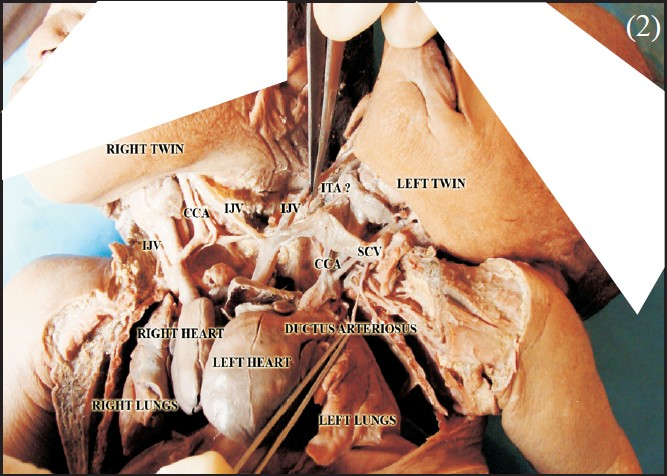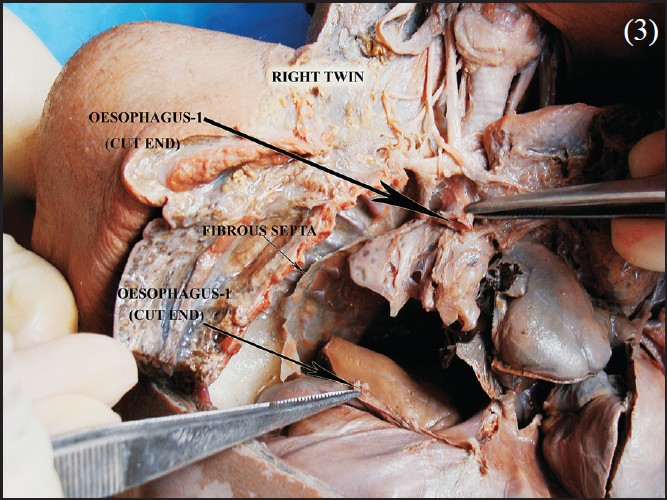Translate this page into:
Double headed conjoined twin - Autopsy findings
*For correspondence: anatomylcp@yahoo.com
This is an open-access article distributed under the terms of the Creative Commons Attribution-Noncommercial-Share Alike 3.0 Unported, which permits unrestricted use, distribution, and reproduction in any medium, provided the original work is properly cited.
This article was originally published by Medknow Publications & Media Pvt Ltd and was migrated to Scientific Scholar after the change of Publisher.
Dicephalus is a subset of parapagus in which twins share a common body from the neck or upper chest downwards, having only a pair of limbs and a set of reproductive organs. This anomaly represents less than 0.5 per cent of all reported cases of conjoined twins. A 24 yr old primigravida delivered a stillborn two-headed male twin by caessarian section in J.J.M. Medical College, Davangere, India in September 2010. She had limited antenatal care and denied any contact with potential hazards during her uneventful pregnancy. This autopsy study was conducted in the department of Anatomy. Babygram (Fig. 1) revealed two separate sets of vertebral columns and two sets of ribs articulated with single sternum. Autopsy revealed (Fig. 2) shared heart in a pericardial sac, two sets of hypoplastic lungs (Fig. 3), among two oesophagus, one continued as stomach and another one got obliterated. No anomalies were noted in abdominal viscera. With the presentation of both fission and fusion theories, this particular case was more in favour of fission theory with a word of caution that the separation has happened only in the cranial part but has not extended into caudal part.

- Babygram of dicephalic conjoined twin.

- Anterosuperior view of dicephalus twin showing conjoined heart and its great vessels.

- Dissected part showing thoracic anomalies.





